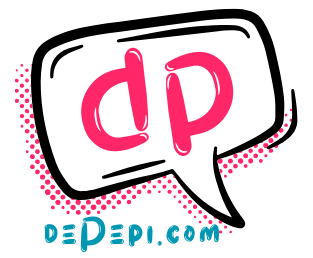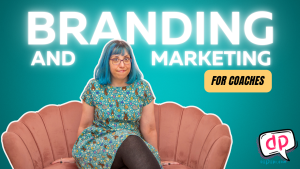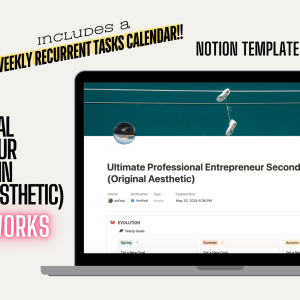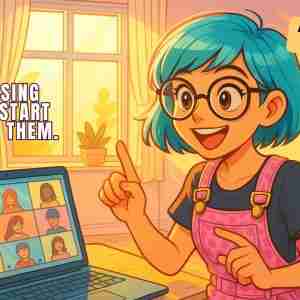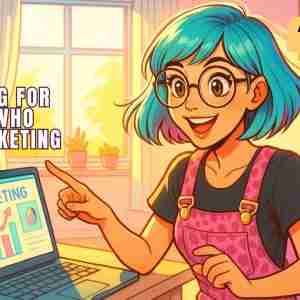Educational Content Marketing: Building Trust and Thought Leadership

When people think about marketing, they often imagine loud sales pitches, clever slogans, or aggressive campaigns. But for coaches, those tactics usually backfire. Coaching isn’t about pushing a product, but about transformation. And transformation requires trust. For that, you need educational content marketing.
Educational content marketing is a natural fit for coaches. By teaching, you’re already doing what you do best: guiding people toward clarity and growth. You’re also building credibility long before you ever get on a call with a potential client.
A sales conversation becomes infinitely easier when someone has already experienced your expertise through your content. They’ve read your blog, listened to your podcast, or joined one of your free webinars. They don’t need to be convinced; you’ve already shown them what working with you feels like.
That’s the power of educational content. It plants seeds of trust that grow into long-term client relationships.
Why Trust Comes Before Sales
Many coaches struggle with this. The temptation is to sell. You’ve invested in your training, you know you can help people, and you want clients now. So, you post something like:
“I have two coaching spots available this month; DM me to apply.”
There’s nothing wrong with this, but if someone has no idea who you are, why would they invest hundreds or thousands of dollars after reading a single LinkedIn post?
Coaching is a high-trust business. Before someone invests, they need to feel confident that:
You understand their struggles.
You have the knowledge to help.
You’re a good fit for their personality and values.
Educational content checks all three boxes. When you consistently share valuable insights, your audience begins to see you as a trusted guide, not just another coach shouting into the void.
This is why hard-selling often undermines authority. The more you push, the more skeptical people become. But when you teach freely, you build goodwill. And goodwill, over time, converts.
What Educational Content Really Looks Like
So what does “educational content” mean in practice?
It’s not about writing academic essays. The best educational content feels useful, practical, and digestible. It’s something your audience can apply immediately to make their lives a little easier.
For example:
A leadership coach might write a blog post titled “Three Daily Questions to Build Confidence as a New Manager.”
A wellness coach could create a 10-minute YouTube video on “The 5-Minute Stress Reset You Can Do at Your Desk.”
A career coach might launch a podcast episode about “How to Reframe Job Rejections Without Losing Confidence.”
The form doesn’t matter: blog, video, podcast, webinar. What matters is that you’re giving value in a way that feels generous, not transactional.
IT’s a Long Game (Content Builds Authority)
One of the biggest misconceptions about marketing is that it should deliver immediate results. Post today, get a client tomorrow. But the truth is, educational content is a long game.
That blog post you write today may not bring a client this week. But six months from now, someone could stumble across it while searching for solutions. They read it, they resonate with it, and suddenly they’re following your work, joining your newsletter, and booking a discovery call.
Educational content has a compound effect. It works quietly in the background, building your reputation even when you’re not online. Every podcast episode, blog post, or webinar becomes part of a library of trust that keeps paying dividends over time.
Teaching Without Giving It All Away
At this point, many coaches worry: “If I give away too much for free, why would anyone pay me?”
What you need is:
Free content shows what to do and why it matters.
Paid coaching dives into how to do it, customized to the individual.
For example, a free guide might explain: “These are the 7 habits that drain a manager’s confidence.” That’s valuable! But what happens in a paid session is far deeper: you help a client unpack which of those habits show up in their life, why, and how to shift them.
In other words, free content attracts. Paid coaching transforms.
Storytelling: The Secret Ingredient
Educational content doesn’t mean dry lectures. The best content mixes stories with insights.
Think about a simple LinkedIn post. Instead of writing,
“Consistency builds habits,”
You might write:
“A client told me yesterday, ‘I just don’t have the willpower to stick to new habits.’ What I reminded her, and I’ll remind you too, is that willpower isn’t the issue. Structure is. When you design your day with small cues, consistency becomes effortless.”
Notice the difference? One sounds like a tip you’ve heard a thousand times. The other feels personal, relatable, and memorable. Stories humanize your expertise.
Please note that storytelling needs to be backed up by reality.
How to Get Started (Without Overwhelm)
One danger with content marketing is burnout. Coaches feel like they need to be everywhere (posting daily on LinkedIn, running a podcast, writing blogs, making Reels). But you don’t need to do it all. In fact, doing less with focus is far more effective.
Here’s a simple framework to start:
Pick your content pillars. Choose three themes directly tied to your coaching niche. Example: resilience, leadership confidence, career transitions.
Choose two main formats. For example, combining a blog with LinkedIn, or a podcast with a newsletter. Stick to what you can realistically manage.
Batch and repurpose. Write a blog post once a month. Break it into four LinkedIn posts. Record a podcast episode by repurposing your blog.
Add a next step. Always include a gentle call-to-action: download a resource, join your email list, or book a free call.
Need help?
If you need help with your marketing strategy or how to plan it, consider joining Branding and Marketing for Coaches or getting my branding and marketing DP framework.
Branding and Marketing for Coaches (Life, Health, Wellness)
TRAP: Vanity Metrics
It’s easy to get discouraged when your content doesn’t rack up likes or shares. But vanity metrics don’t equal business success. A post that gets 20 likes but lands you a client is more valuable than a post that goes viral but leads nowhere.
Measure what matters:
Are more people viewing your profile?
Are you starting meaningful conversations?
Are discovery calls being booked?
That’s the true ROI of content marketing.
Thought Leadership
Educational content doesn’t just generate leads. It positions you as a thought leader.
Thought leadership is about shaping conversations in your industry. It’s saying: “Here’s a problem I see, and here’s a different way to think about it.”
When you consistently share perspectives that challenge, inspire, and educate, people don’t just see you as a coach. They see you as a voice worth following. That’s how reputations and coaching businesses are built.
Serve First, Sell Later
Educational content marketing is the opposite of the hard sell. Instead of shouting “Hire me!” you’re saying, “Here’s something valuable that can help you right now.” The more you teach, the more trust you build. And the more trust you build, the easier it becomes to attract clients who are already convinced of your value.
At the end of the day, people don’t just buy coaching. They invest in a guide they trust. And trust is built through teaching.
